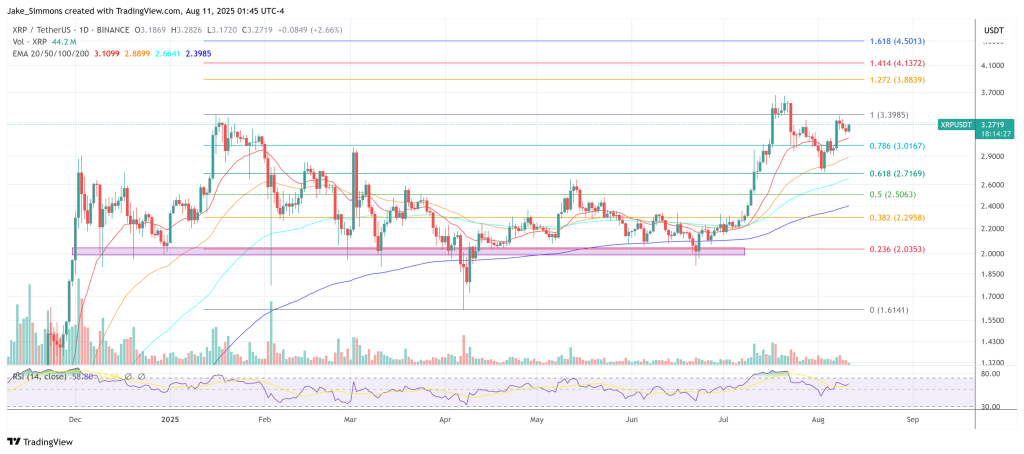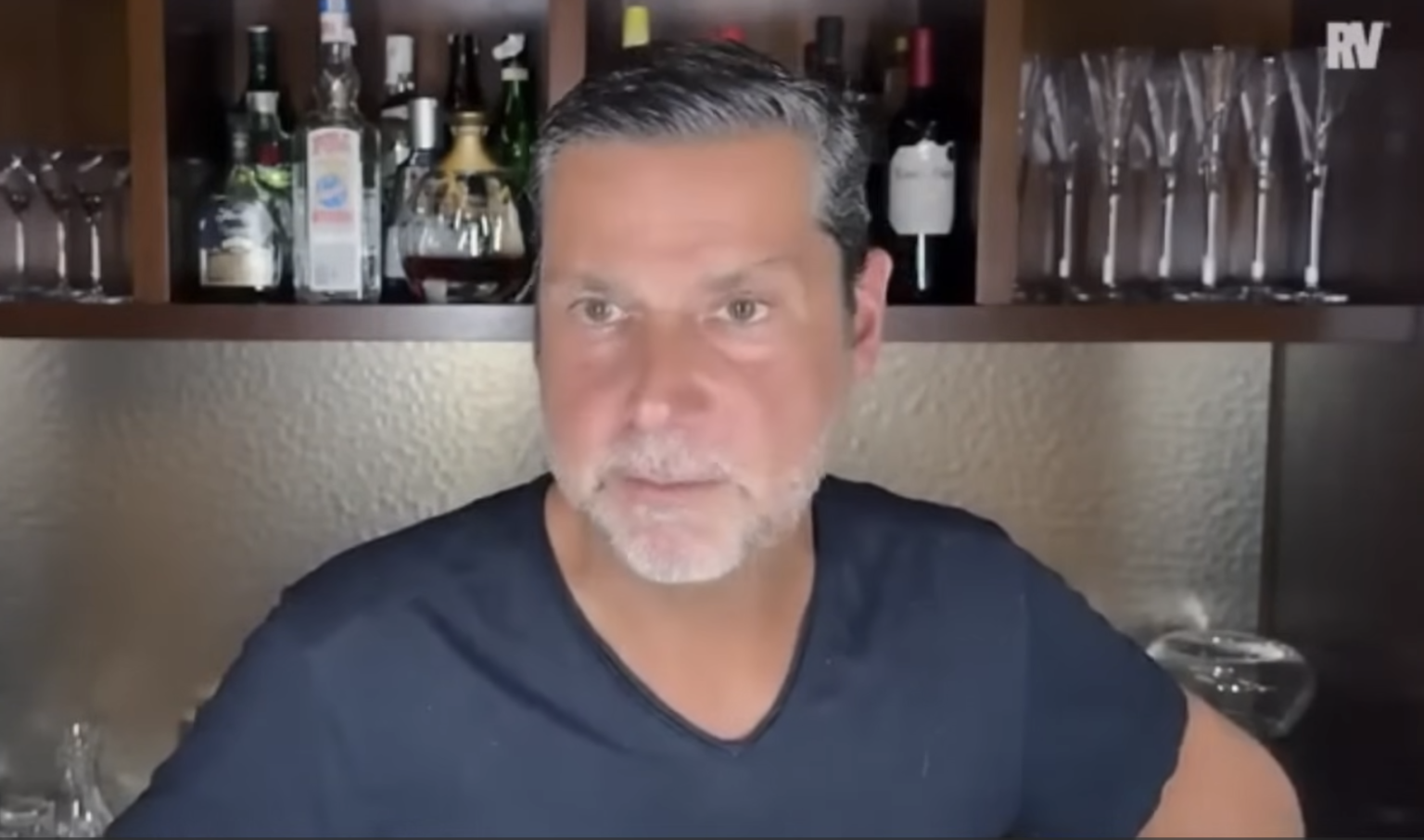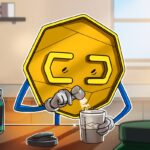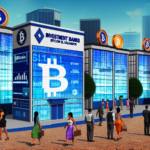
In his latest interview, Raoul Pal sharpened a long-running argument about how retail capital enters crypto markets, placing nominal price—what a single unit costs—at the center of early-cycle behavior. “Sorry, but people are going to buy XRP and Doge and Cardano, whether you like it or not. Because they’re cheap, in the absolute term of, you know, how much you pay for a token. So people will do that,” he said.
He mapped the field into three risk buckets: large, adopted layer-1s he called “idiot-proof,” a harder “middle” composed of disparate DeFi names, and a mechanically simple momentum bet he labeled “the Moron Trade”—not as an insult to holders, he stressed, but as a description of what newcomers tend to do when faced with sticker shock at the top of the table.
Why XRP, ADA And DOGE Are The ‘Moron Trade’
Pal walked through the on-ramp psychology in plain numbers. Newcomers, in his telling, open a screen and see “Bitcoin… $116,000… I can barely afford lunch,” and “Ethereum… well, that’s pretty expensive.” By contrast, they recognize brand-heavy mid-caps with low unit prices and accessible narratives: “Oh, XRP… it’s $3… Doge… Elon likes Doge… it’s $0.22… and Cardano… it’s $0.78.”
The effect, he argued, is predictable: flows gravitate to coins that feel affordable in absolute terms, regardless of fully diluted value or liquidity profile. “I’m not saying that these are moronic and people are moronic for owning them,” he said, reiterating that he was describing a pattern he has “seen play out” whenever retail returns.
The framework leaves space, in Pal’s view, for two parallel trades. On one side are what he called “big layer ones that get adopted,” where he explicitly cited Solana and Sui—“a few others, great”—as the sort of “idiot-proof” exposure that “go[es] up a lot and [is] less risky” when network activity and developer traction compound.
On the other side sit the “middle part,” which he described as “the harder play,” typified by “I’ve got this DeFi token that could be amazing” but will demand better timing, patience, or specialist knowledge. Between those poles sits what he called “the Moron Trade… just buy the cheapest thing in the top 10,” a style he illustrated live—“I’m going to show you the Moron Trade now”—to make the point that unit bias remains a powerful magnet when retail re-engages.
Pal tied the interview themes back to the cycle narrative he and his research businesses have promoted for a year. In an August 10 post on X, he reminded followers that Global Macro Investor and Real Vision Pro “called the start of the Banana Zone in August 2024,” adding that those who followed the “Don’t Fuck This Up” thesis and “hold the top tokens” would be “between 50% and 650% wealthier” since that call.
He listed Sui at +650%, XRP at +630%, Dogecoin at +210%, Bitcoin at +140%, Ether at +105%, and Solana at +51%, before underscoring that Sui was his “best pick” and “remains so.” He attributed the broader framework to what he calls “The Everything Code“.
Taken together, the interview and the follow-up post sketch Pal’s current market map with unusual clarity. First, he expects retail behavior to continue clustering around low unit-price, high-recognition assets such as XRP, Dogecoin, and Cardano as headline prices for Bitcoin and Ether rise.
Second, he continues to favor adopted layer-1s where on-chain activity and developer momentum serve as tailwinds—Solana and Sui being the explicit examples he offered. Third, he remains skeptical of the mid-shelf, thesis-driven DeFi trade for non-specialists, calling it “harder” relative to broad-beta alternatives.
At press time, XRP traded at $3.27.

Featured image from YouTube, chart from TradingView.com

Editorial Process for bitcoinist is centered on delivering thoroughly researched, accurate, and unbiased content. We uphold strict sourcing standards, and each page undergoes diligent review by our team of top technology experts and seasoned editors. This process ensures the integrity, relevance, and value of our content for our readers.






